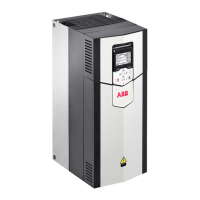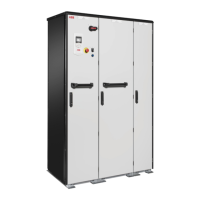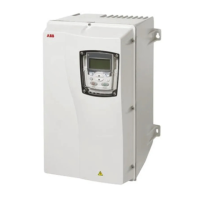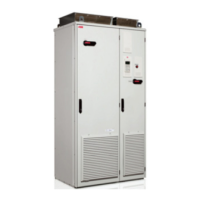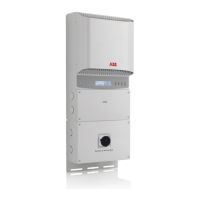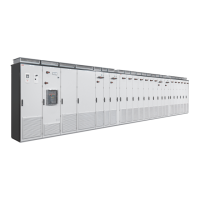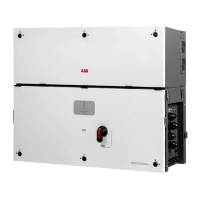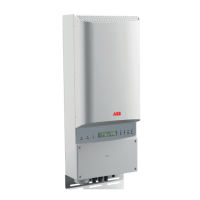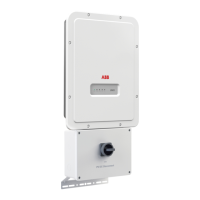4. Loosen the mounting screws of the top busbar (c) so that you can adjust the gap
for the fuse block.
With DC switch (+F286)
Without DC switch
5. Slide out the fuse block.
6. Move the screws, nuts and washers from the blown fuse to the new fuse. Make
sure to keep the washers in the original order.
Note: See the technical data for a table of recommended fuses.
7. Insert the new fuse block into its slot. Tighten both nuts of the fuse only until
there is no play between the fuse and the busbars.
8. Tighten the mounting screws of the top busbars to the tightening torque shown
in the figures below.
With DC switch (+F286)
Without DC switch
70 N·m (52 lbf·ft)
9 N·m (6.6 lbf·ft)
9. Tighten the fuse block nuts to the correct tightening torque:
• Cooper-Bussmann fuses: 50 N·m (37 lbf·ft)
• Mersen (Ferraz Shawmut) fuses: 46 N·m (34 lbf·ft)
• Other: Refer to the fuse manufacturer’s instructions.
10. Install the shroud removed earlier. Tighten the screws to 6 N·m (4.4 lbf·ft).
Capacitors
The intermediate DC circuit of the drive contains several electrolytic capacitors.
Operating time, load, and surrounding air temperature have an effect on the life of
the capacitors. Capacitor life can be extended by decreasing the surrounding air
temperature.
136 Maintenance
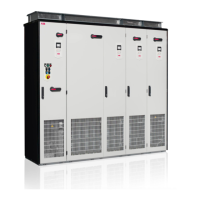
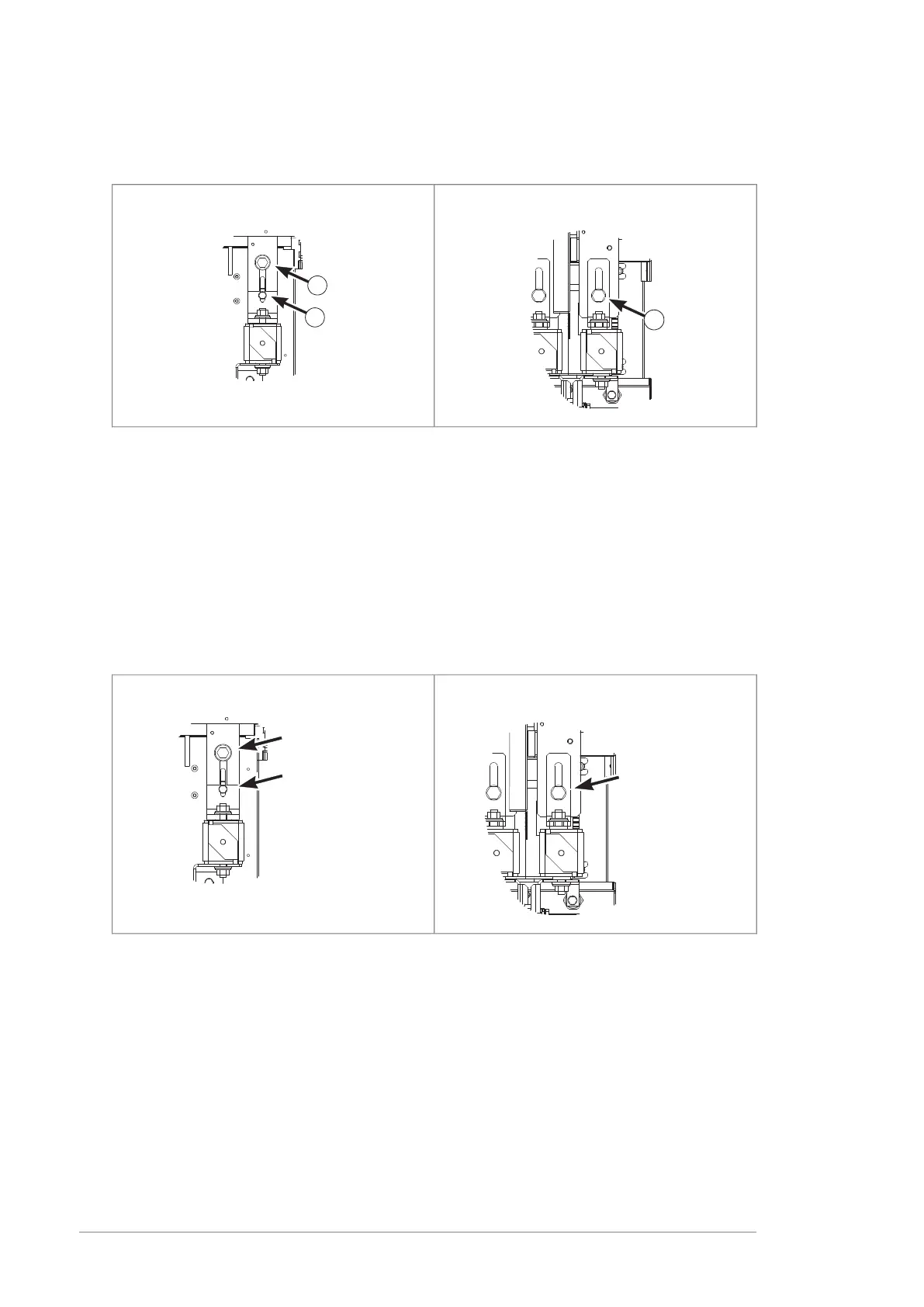